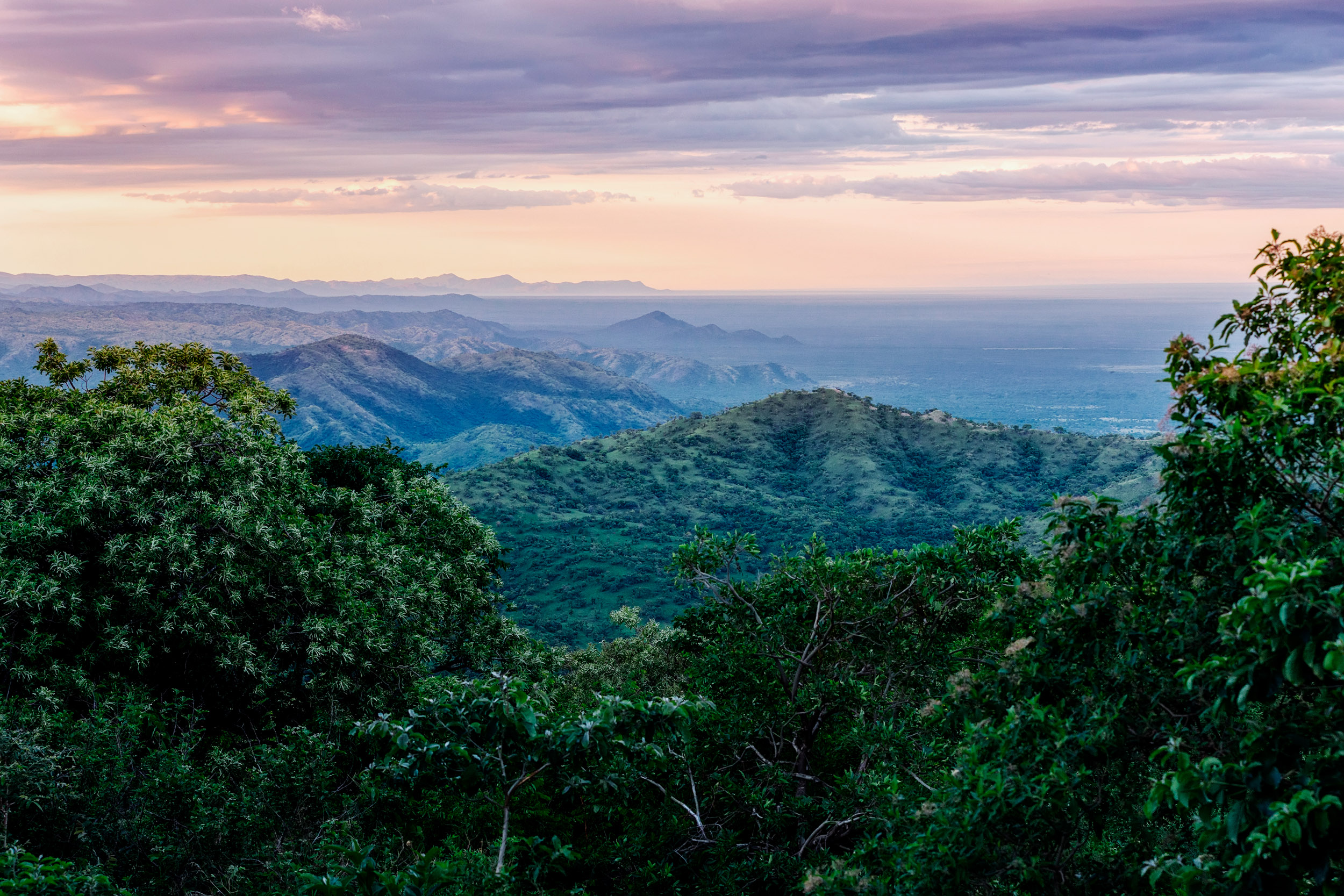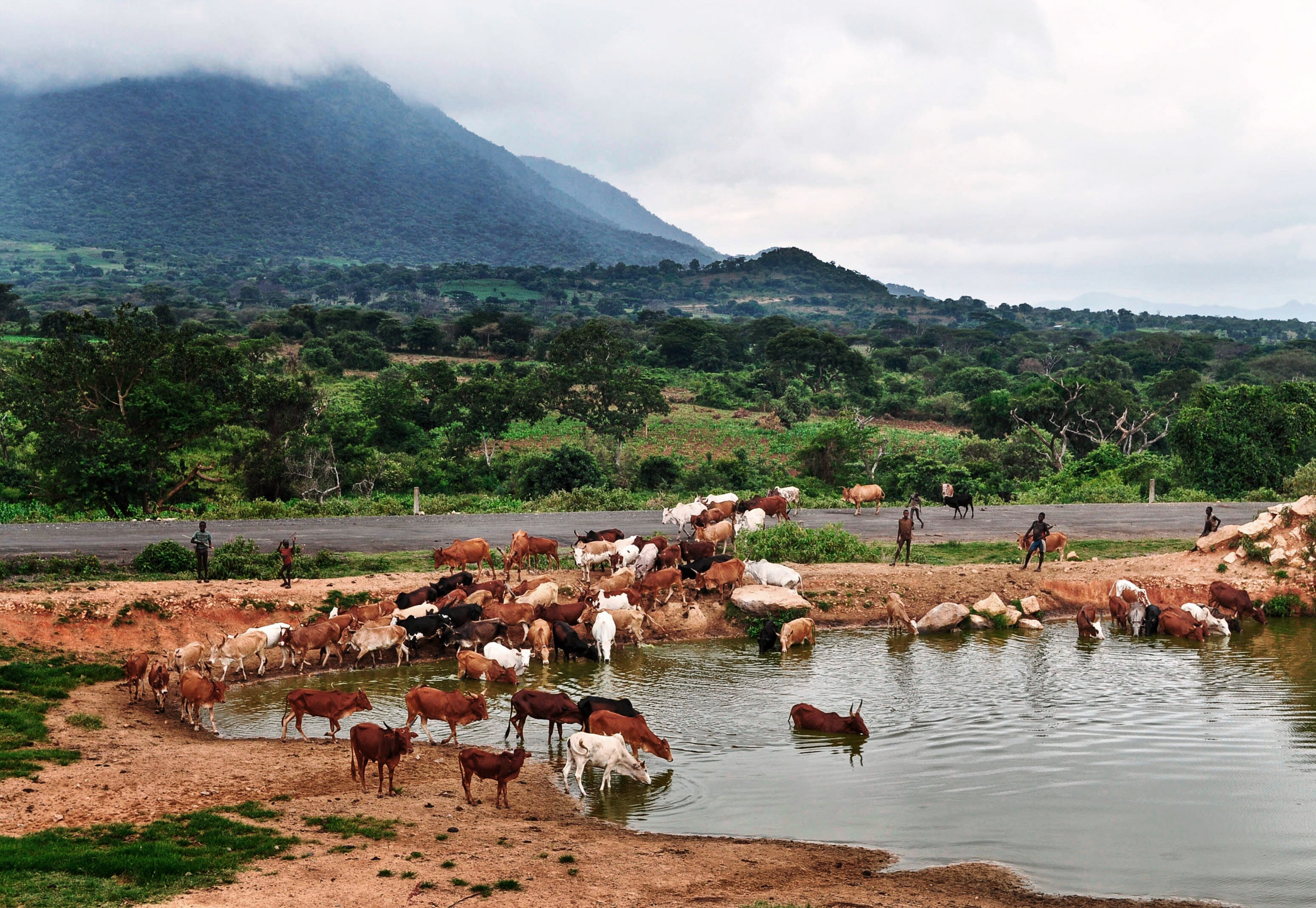According to the religion of the Oromo people of Ethiopia, when the first man died, Waqa wet his grave with his tears, and the first coffee plants sprouted where his tears fell (Yedes et al 2004). This ancient story points to arabica’s origins as a wild plant, which the Oromo found dotted throughout the forests of their homeland in modern-day Ethiopia.
The Omo valley in Ethiopia, home to ‘Cloud Forests’ where wild arabica plants can be found
Ethiopia is generally considered to be the home of wild arabica coffee, but wild or semi-wild plants are also found in neighbouring countries. It’s not always clear whether coffee arrived in those regions spontaneously, or as the result of thousands of years of human intervention. New research published this week by Krishnan et al provides the first genetic evidence that coffee trees growing in South Sudan are truly wild, not brought there by human intervention, and thus represent another possible origin for arabica coffee.
A Single Origin
Most plant species develop through the evolution of an entire population of plants, making it impossible to pinpoint the exact moment that one species became distinct from another. In the case of arabica coffee, however, it seems likely that the entire species can be traced back to a single plant (Scalabrin et al 2020). Arabica’s two parent species, Coffea canephora و Coffea eugenioides, cannot normally interbreed. For the cross to succeed, arabica had to take two sets of chromosomes from each parent instead of one — a rare event called polyploidisation.
Even in the wild, arabica has very low genetic diversity, which suggests this polyploidisation event happened only once. According to Scalabrin et al, this event probably took place somewhere between 10,000 and 665,000 years ago — extremely recent, in evolutionary terms. This single plant gave rise to the entire arabica species, which spread throughout the wet forest highlands of Ethiopia and South Sudan.
When coffee began to be cultivated, arabica’s genetic diversity was reduced even further. Coffee was first cultivated in Yemen from plants brought over from Ethiopia, creating a limited gene pool for cultivation. A handful of plants were then smuggled out of Yemen, creating the two varieties Typica و Bourbon (Anthony et al 2002). The vast majority of arabica in cultivation today descends from these two varieties — a very limited gene pool which puts coffee farmers at risk from diseases like leaf rust.
Coffee plants have also been found growing in other African countries such as Kenya, but similarities with locally cultivated plants suggest that these trees are ‘naturalised’, introduced to the area as a result of cultivation, rather than truly wild (Charrier and Berthaud 1985).
The Boma Plateau
The greatest concentration of wild arabica is found in the cloud forests of Kaffa, in the highlands of South-West Ethiopia. Wild coffee plants are also found across the border in South Sudan, in a region called the Boma Plateau. Conditions here are very similar to those in South-West Ethiopia, but it was a matter of debate whether the arabica here grew spontaneously. The Boma Plateau is separated from the Ethiopian cloud forests by a strip of lower-lying land where arabica doesn’t grow, so it was thought to be possible that the arabica population in South Sudan was introduced by humans travelling into the region from Ethiopia, rather than being truly wild.
 Boma National Park, South Sudan. Picture: Ruby Vance
Boma National Park, South Sudan. Picture: Ruby Vance
Little is known about the arabica growing on the Boma Plateau. Prior to this study, no varieties had been collected from South Sudan since 1941. Three varieties from this expedition survive today in the living gene bank at CATIE: two types of Rume Sudan and one of Barbuk Sudan. A small amount of coffee is produced in South Sudan, mainly for local consumption — but in recent years a small amount has been exported as the result of a TechnoServe project in the country (Smith 2015).
The Genetic Origins of Sudanese Varieties
To establish whether the plants growing in the Boma plateau are truly wild varieties, Krishnan et al (2021) used a form of DNA fingerprinting to compare them to wild varieties found in Ethiopia, as well as to cultivated varieties from around the world. They found one genetic marker that was unique to wild Sudanese plants, indicating that these varieties are genetically distinct from Ethiopian arabica, and therefore represent a truly wild population. This makes it possible that South Sudan, rather than Ethiopia, was the place where the single tree arose that would give rise to all of Coffea arabica.
However, it’s all but impossible to determine where exactly the first arabica tree would have grown, says Dr Aaron Davis of Kew Gardens, a world expert on coffee botany and one of the authors of the research published this week. There has been a lot of climatic change in the region since arabica emerged, and the forests where wild arabica grows may once have covered a much wider area, he says. “The precise origin of arabica could be southwest Ethiopia, or South Sudan,” he says, “but it could also be further south.” Coffee seeds can be spread long distances by birds and small mammals, he explains. “In Ethiopia you often see mammal and bird faeces packed with coffee seeds, sometimes even germinating within the droppings.”
A second genetic marker was found that existed only in wild Sudanese plants and three other varieties — one of the Rume Sudan varieties housed at CATIE, and two varieties from the Scott Agricultural Laboratories: SL-17 and SL-14. The other two ‘Sudanese’ varieties at CATIE did not have this marker.
All three ‘Sudanese’ varieties were used in plant breeding programs in Kenya before being brought to CATIE. The researchers suggest that the Rume Sudan variety containing the Sudanese genetic marker was at some point inadvertently cross-pollinated with other varieties, explaining why it didn’t share the unique marker with modern-day wild Sudanese varieties. The other two varieties at CATIE (one labelled Rume Sudan, and one Barbuk Sudan) might have been diluted even further by cross pollination, the authors say — or they may have even been mislabeled, and therefore not be Sudanese varieties at all.
Varieties Under Threat
The fact that the Sudanese varieties at CATIE may have been contaminated or mislabeled is even more alarming, considering that wild coffee in South Sudan is in danger of disappearing completely. Taking climate change risks into account, wild arabica in South Sudan would be considered ‘Critically Endangered’ according to the criteria for the International Union for the Conservation of Nature (IUCN)’s Red List. The authors estimate that more than 80% of the forest that could support wild arabica in this area has been lost.
Compared to 70 years ago, the last time wild varieties were collected from South Sudan, the wild coffee population on the Boma Plateau is in poor health. Within the remaining forest in the area around Barbuk, the authors found few mature trees and very few new seedlings. In Rume, meanwhile, the forest is completely gone. “If all cultivated accessions of C. arabica ‘Rume’ are compromised… the genetic diversity from Rume may no longer exist in its original form, if at all,” the authors say.
Losing the genetic diversity that still exists in Sudanese wild coffee populations would be a tragedy. The genetic diversity in arabica is among the lowest of all cultivated crops, so wild plants are hugely important for breeders to be able to bring in new traits to mitigate against threats like disease and climate change. Protecting these wild plants, which may have been the original source of the arabica species, will help ensure we can continue enjoying it in the future.







0 تعليق